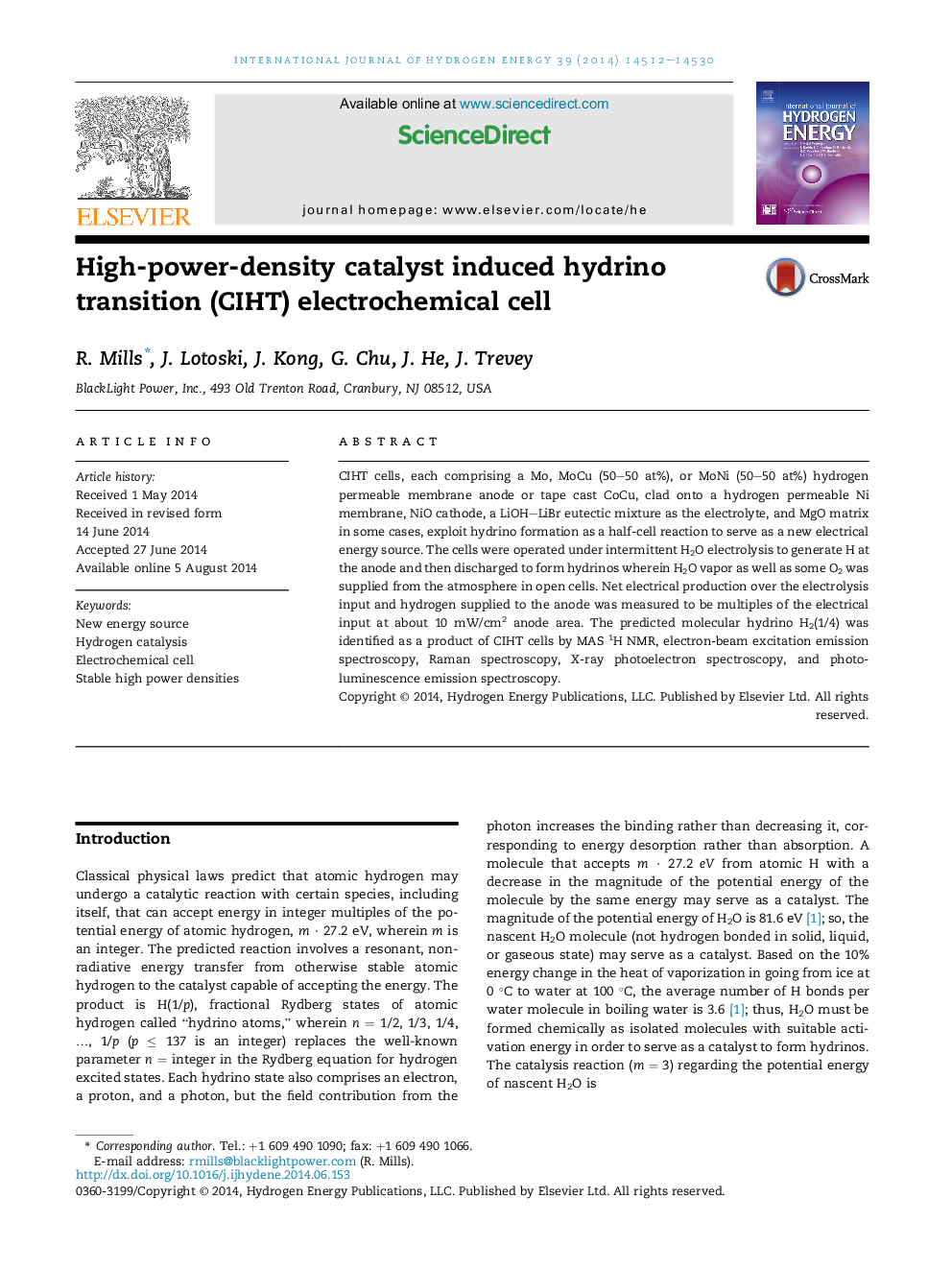| Article ID | Journal | Published Year | Pages | File Type |
|---|---|---|---|---|
| 7718008 | International Journal of Hydrogen Energy | 2014 | 19 Pages |
Abstract
CIHT cells, each comprising a Mo, MoCu (50-50 at%), or MoNi (50-50 at%) hydrogen permeable membrane anode or tape cast CoCu, clad onto a hydrogen permeable Ni membrane, NiO cathode, a LiOH-LiBr eutectic mixture as the electrolyte, and MgO matrix in some cases, exploit hydrino formation as a half-cell reaction to serve as a new electrical energy source. The cells were operated under intermittent H2O electrolysis to generate H at the anode and then discharged to form hydrinos wherein H2O vapor as well as some O2 was supplied from the atmosphere in open cells. Net electrical production over the electrolysis input and hydrogen supplied to the anode was measured to be multiples of the electrical input at about 10Â mW/cm2 anode area. The predicted molecular hydrino H2(1/4) was identified as a product of CIHT cells by MAS 1H NMR, electron-beam excitation emission spectroscopy, Raman spectroscopy, X-ray photoelectron spectroscopy, and photoluminescence emission spectroscopy.
Related Topics
Physical Sciences and Engineering
Chemistry
Electrochemistry
Authors
R. Mills, J. Lotoski, J. Kong, G. Chu, J. He, J. Trevey,
